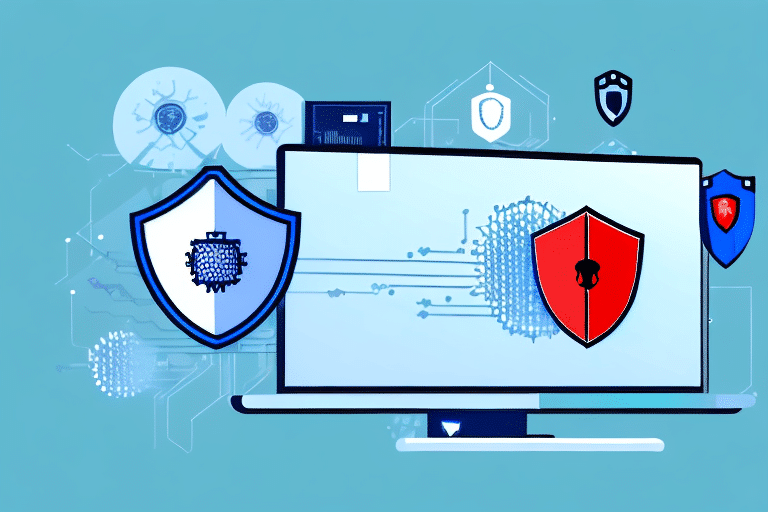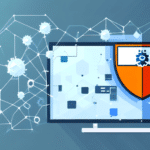Protecting Your Business from FedEx Ship Manager Ransomware
Ransomware attacks have become a pervasive threat to businesses worldwide, targeting organizations of all sizes and industries. Among these threats, FedEx Ship Manager Ransomware has emerged as a particularly deceptive variant, leveraging the credibility of FedEx to infiltrate company systems. This malicious software encrypts critical files and data, effectively paralyzing business operations until a ransom is paid. As cyber threats continue to evolve, it is essential for business owners to implement robust security measures to safeguard their organizations against such attacks.
Understanding FedEx Ship Manager Ransomware
FedEx Ship Manager Ransomware is a type of malware designed to exploit vulnerabilities in Windows-based systems. It often disguises itself as official communication from FedEx, complete with authentic branding and logos, to trick users into downloading the malicious software. Upon activation, the ransomware encrypts files, rendering them inaccessible and displaying a ransom demand for the decryption key.
How FedEx Ship Manager Ransomware Operates
The ransomware typically spreads through phishing emails that appear legitimate, prompting recipients to click on malicious links or download infected attachments. Once executed, the malware begins encrypting files across the network, including documents, databases, and other essential data repositories. The encryption process can take several hours, depending on the volume of data, during which users are locked out of their systems.
It's important to recognize that paying the ransom does not guarantee the recovery of encrypted data. In some instances, attackers may provide faulty decryption keys or demand additional payments, perpetuating the cycle of extortion.
The Impact of Ransomware Attacks on Your Business
Ransomware attacks can have severe and far-reaching consequences for businesses. The immediate effects include loss of access to critical data, which can disrupt operations and lead to significant financial losses. Additionally, businesses may face reputational damage, loss of customer trust, and potential legal ramifications if sensitive client information is compromised.
Financial and Operational Consequences
The financial impact of a ransomware attack extends beyond the ransom itself. Costs may include expenses related to system restoration, data recovery, IT support, and implementing enhanced security measures. For small businesses, these costs can be particularly burdensome, potentially jeopardizing their financial stability.
Reputational Damage and Legal Implications
A successful ransomware attack can erode customer trust, especially if sensitive data such as personal information or financial records are exposed. This breach of trust can lead to a loss of clientele and damage to the company's reputation. Furthermore, businesses may face legal consequences if they fail to comply with data protection regulations, resulting in fines and sanctions.
Preventing Ransomware Attacks: Best Practices
Preventing ransomware attacks requires a multifaceted approach that encompasses technical defenses, employee education, and robust policies. By implementing comprehensive security measures, businesses can significantly reduce the risk of falling victim to ransomware.
Strengthening Email Security
Phishing emails are a common entry point for ransomware. Implementing advanced email filtering solutions can help detect and block malicious emails before they reach employees' inboxes. Additionally, educating employees to recognize and report phishing attempts is crucial in mitigating this risk.
Maintaining Up-to-Date Software and Security Patches
Regularly updating software and applying security patches is vital in protecting systems from known vulnerabilities. Outdated software can serve as an easy target for attackers, allowing ransomware to exploit weaknesses and infiltrate networks. Enabling automatic updates ensures that critical patches are applied promptly.
Implementing Robust Backup Strategies
Regular data backups are an essential component of ransomware defense. By maintaining secure and up-to-date backups, businesses can restore encrypted data without succumbing to ransom demands. Backups should be stored in multiple locations, including offsite and cloud-based storage, to ensure redundancy and accessibility in the event of an attack.
Utilizing Antivirus Software and Firewalls
Deploying reputable antivirus software and configuring firewalls can provide an additional layer of protection against ransomware. These tools help detect and block malicious activities, preventing ransomware from executing and spreading within the network.
Importance of Regular Backups and Disaster Recovery Plans
Regular data backups and a well-defined disaster recovery plan are critical in minimizing the impact of ransomware attacks. These strategies ensure that businesses can quickly recover and resume operations with minimal disruption.
Developing a Comprehensive Backup Strategy
A comprehensive backup strategy involves scheduling regular backups, verifying the integrity of backup data, and ensuring that backups are stored securely. It's recommended to follow the 3-2-1 backup rule: maintain at least three copies of data, store backups on two different media types, and keep one backup offsite.
Creating and Testing a Disaster Recovery Plan
A disaster recovery plan outlines the steps to be taken in the event of a ransomware attack or other data loss incidents. This plan should include procedures for data restoration, communication protocols, and roles and responsibilities of team members. Regularly testing the disaster recovery plan ensures its effectiveness and helps identify areas for improvement.
Educating Employees on Cybersecurity
Employees play a pivotal role in preventing ransomware attacks. By fostering a culture of cybersecurity awareness, businesses can empower their workforce to act as the first line of defense against cyber threats.
Conducting Regular Cybersecurity Training
Regular training sessions can educate employees on identifying phishing attempts, recognizing suspicious activities, and following best practices for data security. Interactive workshops and simulated phishing exercises can reinforce learning and improve vigilance.
Establishing Clear Security Policies
Clear and comprehensive security policies provide guidelines for employees on acceptable use of company resources, password management, and handling of sensitive information. Ensuring that all team members are familiar with these policies helps maintain a secure work environment.
Responding to a Ransomware Attack
In the unfortunate event of a ransomware attack, a swift and coordinated response is essential to minimize damage and facilitate recovery.
Immediate Actions to Take
Upon discovering a ransomware attack, the first step is to isolate affected systems to prevent the malware from spreading. Disconnecting infected devices from the network and disabling remote access can contain the threat. It is also crucial to notify the IT team and any relevant stakeholders immediately.
Engaging with Professionals and Authorities
Contacting cybersecurity professionals can aid in assessing the extent of the attack and implementing remediation measures. Additionally, reporting the incident to law enforcement and relevant regulatory bodies ensures compliance with legal requirements and may assist in the investigation.
Avoiding Ransom Payments
While it may be tempting to pay the ransom to regain access to data quickly, doing so is not recommended. There is no guarantee that the attackers will provide the decryption key, and paying the ransom may encourage further criminal activity.
Securing Your Systems Against Future Threats
Beyond immediate prevention and response, ongoing efforts to secure systems are essential in protecting against evolving ransomware threats.
Implementing Multi-Factor Authentication (MFA)
MFA adds an extra layer of security by requiring multiple forms of verification before granting access to systems. This reduces the likelihood of unauthorized access, even if login credentials are compromised.
Adopting Zero Trust Architecture
The Zero Trust model operates on the principle of "never trust, always verify." By continuously monitoring and validating user access, businesses can enhance security and reduce the risk of ransomware infiltration.
Leveraging Cyber Insurance
Cyber insurance policies can provide financial protection against losses resulting from ransomware attacks. These policies typically cover costs related to data recovery, legal fees, and system restoration, helping businesses recover more swiftly from incidents.
Conclusion
Protecting your business from FedEx Ship Manager Ransomware requires a comprehensive and proactive approach. By understanding how ransomware operates, implementing best practices for prevention, educating employees, and having robust response strategies in place, businesses can significantly mitigate the risks associated with ransomware attacks. Investing in cybersecurity not only safeguards your company's assets but also ensures long-term operational resilience in an increasingly digital landscape.




















